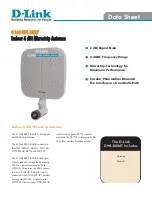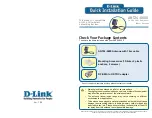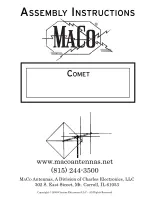
Hy-Gain TH-1 Rotatable Dipole Instructions
9
Tuning the Antenna
1) Adjust the 6-meter resonant frequency first. Then proceed to 10-meters, 15-meters, and
finally 20-meters. The SWR should be below 2:1 at resonance on each band.
2) The six meter band is tuned by lengthening or shortening the threaded portion of the stubs.
This adjustment is very coarse. If the frequency is still too low with the stub element
extension at a minimum, the unthreaded ends of the stubs can be trimmed.
NOTE
: The six meter stub covers 50 to 54 MHz. Resonance at 50.15 MHz (popular SSB
part of the band) typically requires the full 55-inch stub lengths (flat side of aluminum
mounting bracket to end of stub).
15) If available, mount the antenna on a short temporary mast 6-8 feet above the ground and
check the resonant frequency of the antenna on 20-, 15-, and 10-meters.
Note: The resonant frequency will increase about 50 kHz on 20 meters, 75 kHz on 15
meters, and 100 kHz on 10 meters when the antenna is raised to 20-feet or higher.
16) If necessary, adjust the resonant frequency on the three bands. Start with 10-meters by
adjusting the innermost tubing lengths, then move to 15-meters (adjust the spacing between
the two traps), and finally 20 meters (adjust the length of the end tubes). Shortening the
tubes increases the resonant frequency, and lengthening the tubes decreases the resonant
frequency.
Note: Changing the resonant frequency of a higher frequency band will also change the
resonant frequency of the bands below the changed band. I.e., increasing the
resonant frequency of the 10-meter element will also increase the resonant frequency
of both 15- and 20-meters.
17) Mount the antenna in the final location.
GROUNDING CONSIDERATIONS
Although this antenna is designed to operate efficiently without the requirement of an earth
ground, safety grounding must still be provided to protect equipment, property and persons from
the hazards of lighting strikes and other weather related electrical discharges.
Adequate protection can be accomplished by grounding the shield of the coax to a good earth
ground where it enters the building, or directly burying the cable in the earth for several feet
before it enters the building. For maximum lightning protection, the coaxial cable should be
totally disconnected from the station during threatening weather conditions.



























